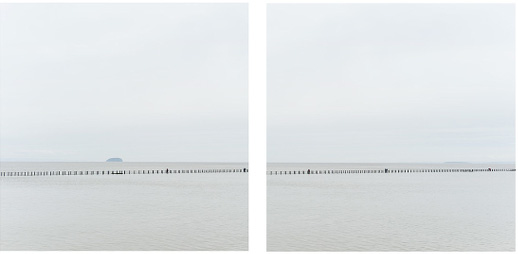11. Somerset
Brighter Later is a journey around Britain looking out to sea from each coastal county
There has been evidence of occupation in Weston-super-Mare since the Iron Age, though it was still a small village until the 19th century when it became a seaside resort with the coming of the railway. Sadly like most British coastal towns, tourism declined with the advent of cheap air travel, but Weston still remains a popular destination.
Weston-super-Mare’s major tourist attractions these days seem to be a selection of donkeys and the worlds largest dedicated museum of helicopters. Sadly, no-one has thought of combining these two giants of entertainment into one foolish and possibly fatal equine flying experience, but there’s still time.
The museum is actually rather brilliant, and contains some fine examples of helicopters that have been built at home, the Murray M-1, BAPC60 being one of them. This was constructed in 1954 at Salford by Mr. John Murray, a motor mechanic who believed “everybody should have a personal helicopter”
He utilised only the equipment available to him in his garage and spent three years and over £1000 building the machine which resembles an horrific scaffolding accident. Also preserved is the Watkinson CG-4, BAPC128. The CG-4 was the third manpowered ‘Cyclogyroplane’ built by Herbert Watkinson of Bexhill in his effort to win the £50,000 Kremer prize for human powered flight. By March 1977 the CG-4 was nearing completion, and permission to carry out flight trials at Lydd Airport in Kent had been granted. However a major set back occurred later in 1977, when Herbert was diagnosed as being terminally ill and sadly died. After going into storage, this unique machine which could be the result of a one-night stand between a shopping trolley and a combine harvester, together with all the surviving documentation and photographs of the Cyclogyroplane story, was donated to the Helicopter Museum for preservation as a tribute to one man’s dream to fly with the birds.
Donkeys have been part of Weston since at least the 19th century: a town guide certainly mentions fishermen taking their donkeys out to Birnbeck Island to collect the herrings and sprats which had been caught there. Throughout the 1820s and 30s owners made a little extra money by hiring out these ‘Jerusalem Ponies’ as they were known, to visitors for day trips into the surrounding countryside. Once the railway arrived in Weston the donkeys found themselves in great demand with up to 150 of the beasts giving rides on the beach at any one time. These days the fleet of executive jacks and jennys is run by the Mager family who have been in the donkey business since 1886.
Sadly on the day of my visit no donkeys seem to be present, they have probably gone abroad for their holidays.
